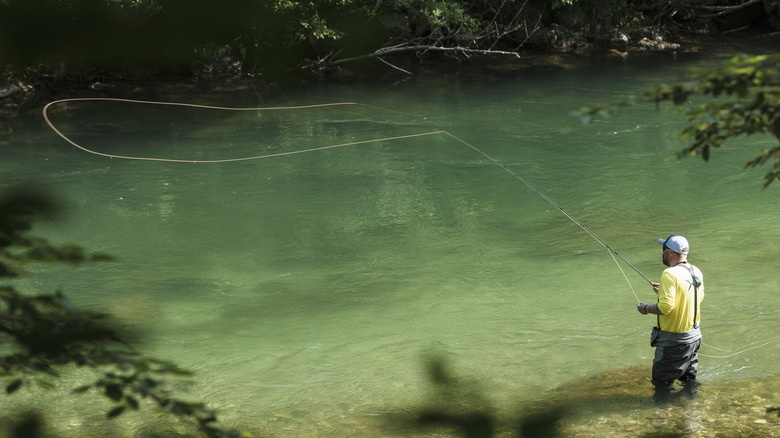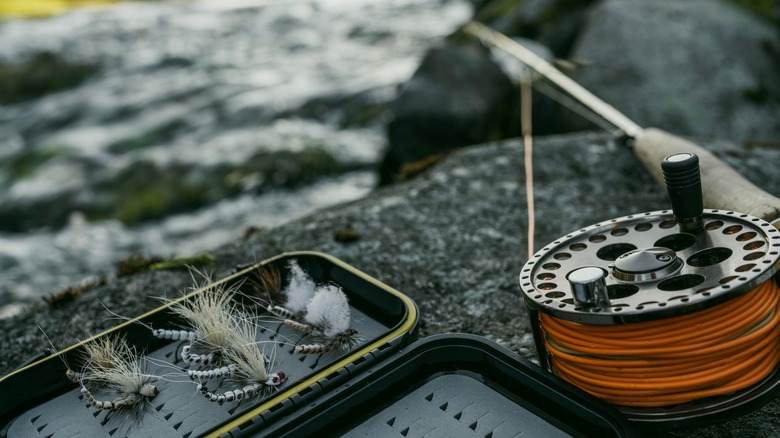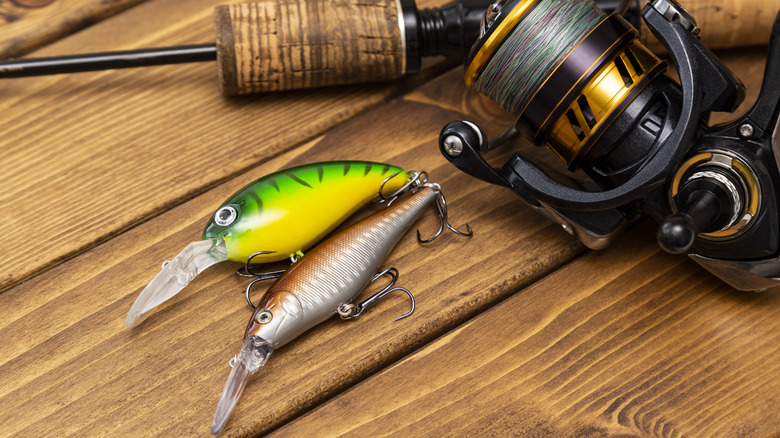Fly Fishing Vs. Regular Fishing: What's The Difference?
Fishing has long been one of the most popular outdoor recreational activities in the United States. According to the American Sportfishing Association, roughly 74 million Americans consider themselves anglers, with about 50 million of those saying they have continued to fish annually. The number of people taking up angling has grown in recent years, with women being one of the fastest growing groups. In fact, there are more women than ever fishing in the United States.
However, to say people fish is a very generic statement. There is a wide range of types of fishing. The basic way to broadly categorize angling is saltwater fishing and freshwater fishing. Freshwater fishing venues include lakes, streams, rivers, and ponds. On the saltwater side, anglers can choose to fish in bays and estuaries, in the surf along the beachfront, nearshore waters, or further out for deep sea fishing. As far as equipment, there is fly fishing and regular, or conventional, fishing tackle.
In three decades as a fishing guide, outdoor writer, and fly casting instructor, I have seen this cause confusion both for the estimated four million people who try out fishing for the first time every year as well as for anglers experienced in one style of fishing who are wanting to try another type. So, what is the difference between fly fishing and regular fishing? That primarily comes down to the type of equipment being used and what is being utilized to get fish to bite.
What is fly fishing?
In fly fishing, a weighted line is used to deliver an unweighted or lightly weighted "fly." This line is categorized by its actual weight in grams. When selecting fly equipment, first choose the proper weight line for the type of fishing you are doing, then match the rod and reel of the same weight. For example, a 5-weight line is common for freshwater trout fishing. That line would then be paired with a 5-weight fly rod and spooled on a 5-weight fly reel.
Lines are also labeled by their taper or weight distribution. Weight forward, designated as WF, is the most common. Fly lines are also available in different styles, such as floating and sinking. Floating is the most common and perhaps the most versatile, although in some types of fishing various sinking lines are more effective. Because fly lines are thick and highly visible, a tapered section of monofilament or fluorocarbon leader is tied between the fly line and fly. The last section of leader is known as tippet. Between the 90-foot section of fly line and the reel is a length of braided line known as backing.
What fly fishermen utilize to attract fish are known as flies or fly patterns. Fly patterns are typically tied from natural materials, such as hair and feathers, although some synthetic materials are used. Fly fishing is a finesse style of angling. While it is most commonly associated with streams and rivers, fly tackle is made for a variety of fresh- and saltwater angling applications including lake, bay, offshore, and saltwater flats.
What is conventional fishing?
Conventional fishing utilizes what is known as conventional fishing tackle — spinning, baitcast, or spincast rods and reels. This is what the majority of Americans picture when they think of recreational fishing. These reels are spooled with monofilament, fluorocarbon, or braided line. While there are several differences between these types of conventional tackle (for example, spinning reels have fixed spools while baitcast reels utilize a revolving spool), all types of conventional tackle work on the same premise. In conventional tackle fishing, a weight or weighted lure is cast and it pulls an unweighted line as it goes. This delivery method is essentially the opposite of that utilized with fly tackle.
Conventional tackle fishermen, whether fishing in fresh- or saltwater, may use a variety of live or dead natural baits. Fishermen using conventional tackle may also use artificial lures. While some conventional lures are made with bucktail or other natural materials, most are made from metal or either hard or soft plastic materials. Conventional tackle can be used in all types of fishing. The key is matching the proper equipment to the type of fishing. Rods are rated by action, appropriate lure weight, and proper line range. Anglers will select their rod based on the species they are fishing for and the type of water body they are fishing. They will then choose the reel, line, and lures or bait to match.


